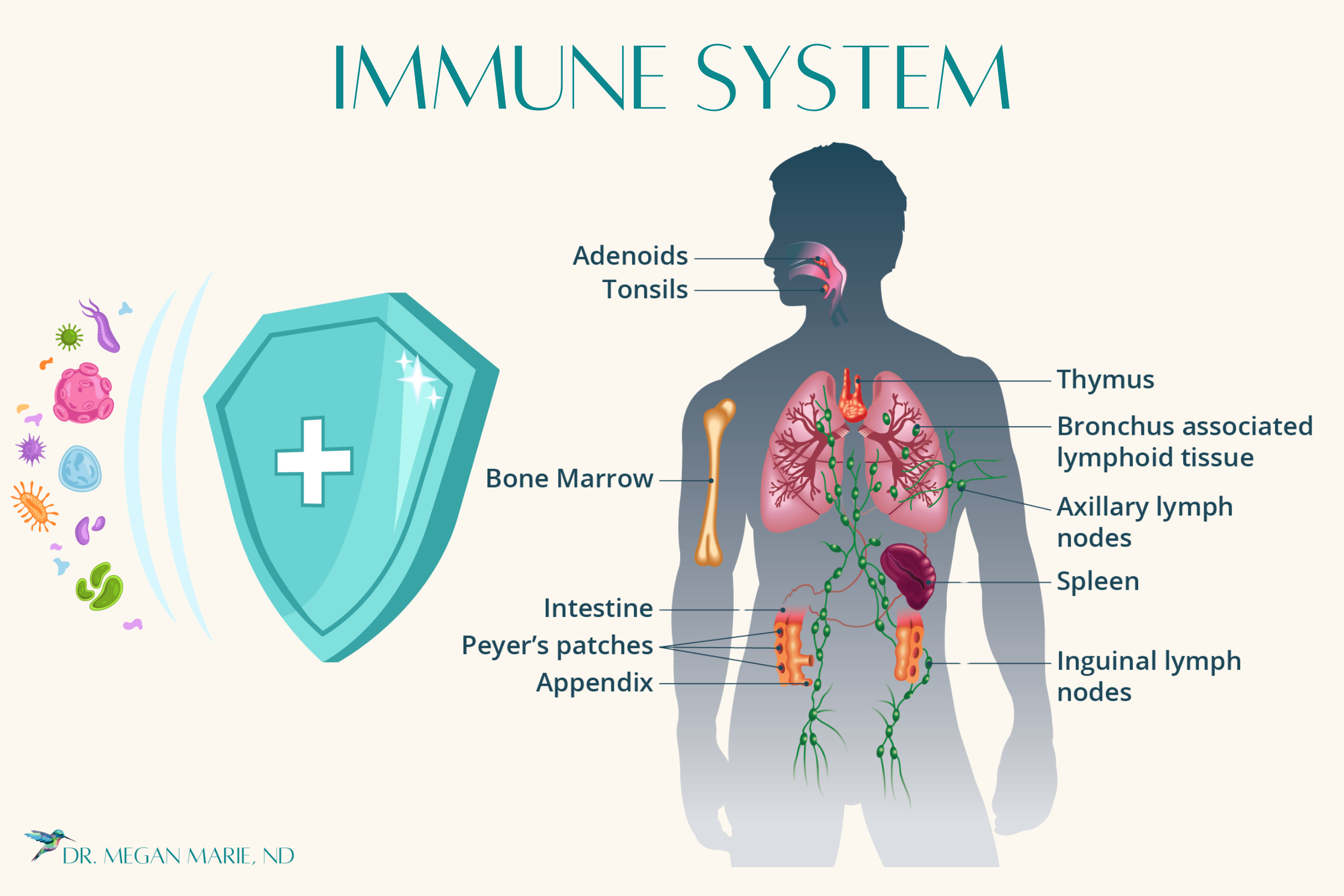Tour of the Body: The Immune System Intro
Imagine a city that never sleeps — one where guardians, messengers, and repair crews are working around the clock to keep you safe, balanced, and thriving.
That's your immune system.
And it’s so much more than just fighting colds.
WHAT IS THE IMMUNE SYSTEM, REALLY?
The immune system isn’t a single organ. It’s a vast, interconnected network that spans your entire body — a dynamic communication web where different players team up to protect, repair, and recalibrate.
It includes:
Bone marrow (where immune cells are born)
Lymph nodes (where immune cells gather and strategize)
Spleen (filters blood and supports immune responses)
Thymus (where T-cells “graduate” and learn their roles)
Gut-associated lymphoid tissue (GALT) (the headquarters of immune activity in your gut)
Skin and mucosal barriers (the physical shields)
In other words, immune cells live everywhere — patrolling your bloodstream, surveying your skin, standing guard in your gut. They're constantly gathering information, responding to changes, and communicating with each other to keep you in balance.
THE LAYERS OF PROTECTION
Your immune system operates with a beautifully layered defense system:
First Line: Physical Barriers
Your skin, mucous membranes, stomach acid, and even enzymes in your saliva create physical and chemical shields to block invaders.
Second Line: Innate Immunity (The First Responders)
Think of this as your "local patrol."
Cells like neutrophils, macrophages, and natural killer (NK) cells are fast, nonspecific defenders. They’re the ones who show up first when you get a splinter or catch a virus.
Third Line: Adaptive Immunity (The Specialists)
This is your "SWAT team."
B-cells and T-cells recognize specific threats, build memory, and craft targeted attacks. They’re why vaccines work, and why your body "remembers" past infections.
Analogy: If your body were a castle, the skin is the moat and walls; innate immunity is the roaming guards; adaptive immunity is the elite guard unit who knows exactly what to look for.
BALANCE, NOT BRUTE FORCE
One of the most important things to understand about your immune system: it's not about fighting everything.
It’s about discernment.
Knowing when to act, when to stay calm, and when to repair instead of destroy.
When this discernment falters, we see the consequences: allergies (mistaking harmless things like pollen for threats), autoimmunity (attacking our own tissues), or chronic infections (missing real dangers).
A highly sensitive immune system isn’t a “weakness.” It’s often a sign of an information-rich system — one that needs calibration rather than suppression.
For empaths and highly sensitive individuals, this is key. Your sensitivity — whether physical, emotional, or energetic — often mirrors a deeper biological sensitivity, including immune vigilance.
When guided wisely, it’s a strength.
FUN FACTS:
70% of your immune system lives in your gut. (No wonder gut health and immunity are so tightly linked!)
Fever is a feature, not a flaw. It’s a natural defense that helps your body fight infection more effectively.
Chronic stress shrinks the thymus gland — the place where T-cells mature. (Stress management isn’t just a luxury; it’s an immune-supporting necessity.)
WHAT’S COMING
We’ll explore:
Meet the Players: Barriers, Innate Defenders, and Adaptive Specialists
How Inflammation Works (and When It's Actually a Good Thing)
The Truth About "Boosting" Your Immune System
How to Balance Immune Sensitivity (and Support Autoimmune Wellness)
Your Inner Ecosystem: The Gut-Immune-Brain Connection
FINAL THOUGHTS
Your immune system isn’t just your defense team. It’s a messenger network, a repair crew, and a lifelong guardian.
When you learn how it works — and how to work with it — you tap into a deeper layer of connection with your body’s innate wisdom.
Stay tuned!
Are there specific areas of the immune system you're curious about? Drop a comment below, and I'll be sure to cover them as we journey through this incredible body-wide network!



